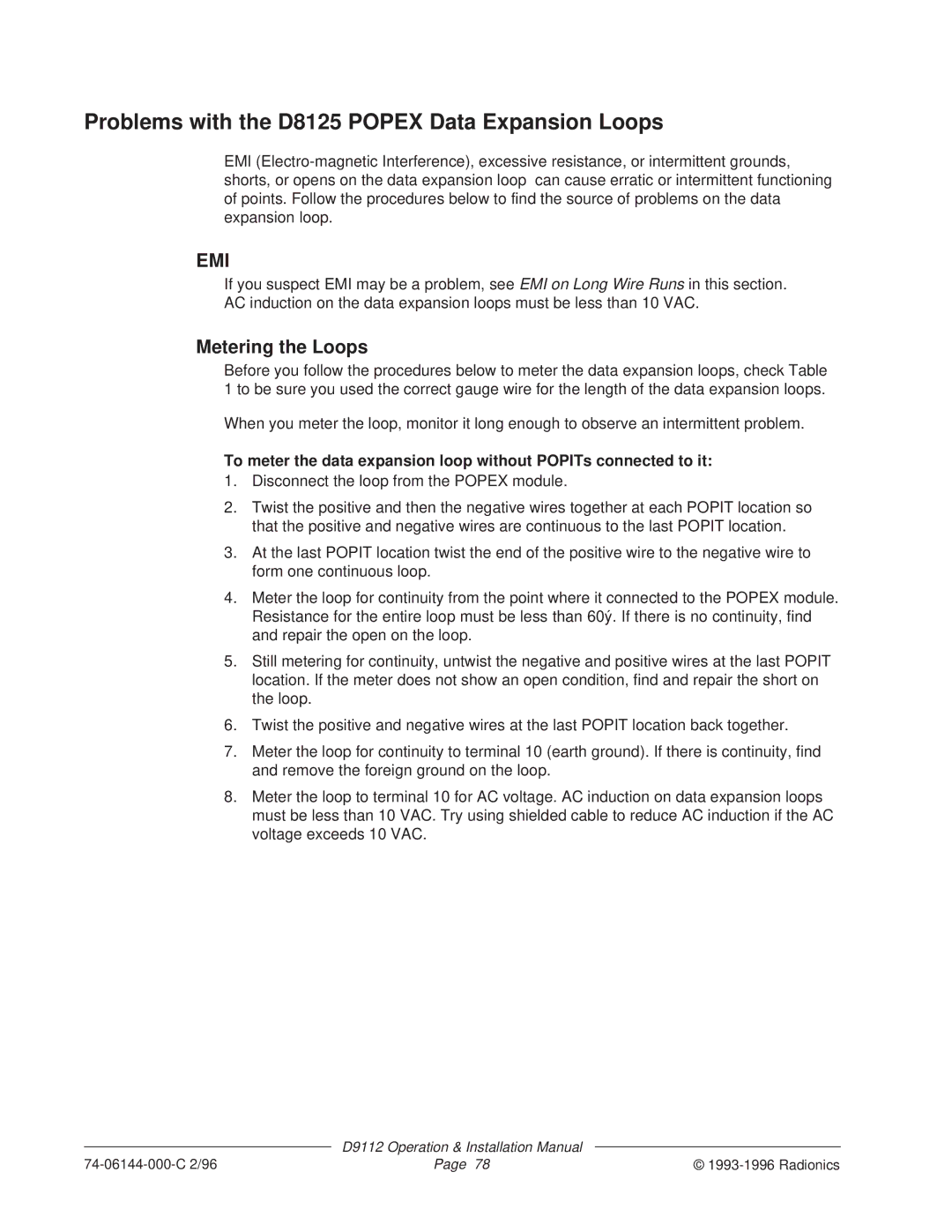Problems with the D8125 POPEX Data Expansion Loops
EMI
EMI
If you suspect EMI may be a problem, see EMI on Long Wire Runs in this section.
AC induction on the data expansion loops must be less than 10 VAC.
Metering the Loops
Before you follow the procedures below to meter the data expansion loops, check Table 1 to be sure you used the correct gauge wire for the length of the data expansion loops.
When you meter the loop, monitor it long enough to observe an intermittent problem.
To meter the data expansion loop without POPITs connected to it:
1.Disconnect the loop from the POPEX module.
2.Twist the positive and then the negative wires together at each POPIT location so that the positive and negative wires are continuous to the last POPIT location.
3.At the last POPIT location twist the end of the positive wire to the negative wire to form one continuous loop.
4.Meter the loop for continuity from the point where it connected to the POPEX module. Resistance for the entire loop must be less than 60ý. If there is no continuity, find and repair the open on the loop.
5.Still metering for continuity, untwist the negative and positive wires at the last POPIT location. If the meter does not show an open condition, find and repair the short on the loop.
6.Twist the positive and negative wires at the last POPIT location back together.
7.Meter the loop for continuity to terminal 10 (earth ground). If there is continuity, find and remove the foreign ground on the loop.
8.Meter the loop to terminal 10 for AC voltage. AC induction on data expansion loops must be less than 10 VAC. Try using shielded cable to reduce AC induction if the AC voltage exceeds 10 VAC.
| D9112 Operation & Installation Manual |
|
Page 78 | © |
